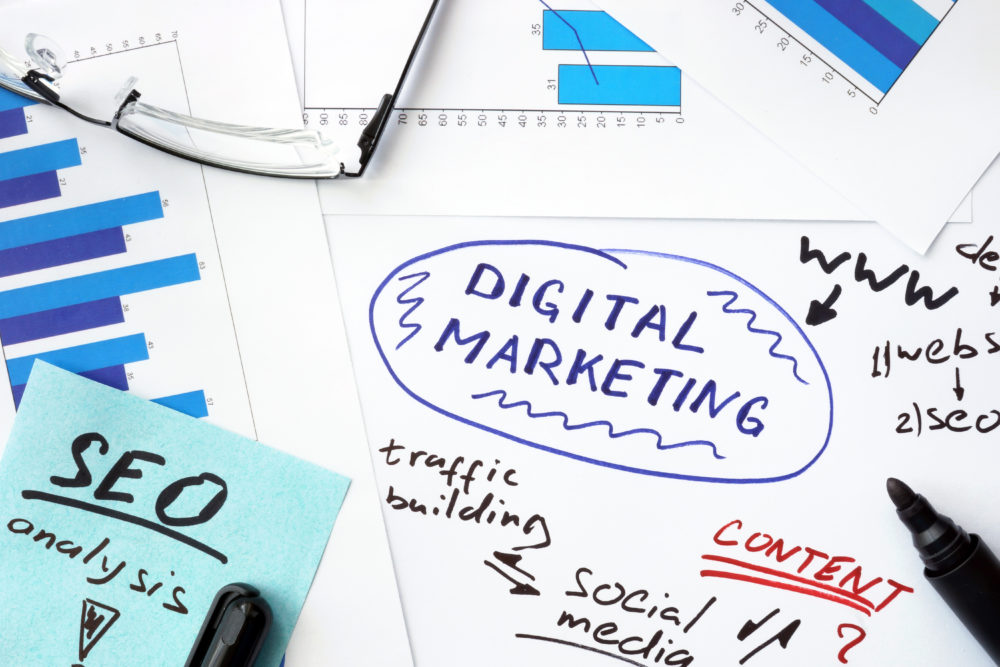The stats this year to encourage a business to invest seriously in digital marketing are compelling. According to IMRG, online retail sales grew 11.1 per cent and sales via mobile devices grew year on year by 23.7 per cent. A CMS report reveals that average smartphone conversion rates are up 64 per cent compared to the average desktop conversion rates.
Digital is the place to be for exposure, but the digital world is a crowded place where marketers are clamouring to have their voice heard. On top of this, the concentration span of customers is diminishing. How on earth as a start-up can you get your voice heard?
You need to develop an arsenal of digital marketing tactics that together help you claim a space. Here are the top five tactics to consider when you look at your digital strategies.
Mix of digital platforms: social, PR and search
Ian Cowley, managing director of Cartridge Save, purposely uses a variety of marketing techniques including social media, PR, search and online digital hubs, as customers no longer make decisions based on seeing one advert on a single platform.
Instead, customers pass through a purchasing funnel en route to conversion: from awareness to consideration; research to validation, and Cowley recommends company’s to make sure their online presence supports customer behaviour.
‘For example, we use PR to drive awareness through news of our charity work. Social media then kicks in to promote added-value content to build trust with potential customers and educate on our brand values,’ Cowley says.

The company displays a raft of content in its field, such as printer reviews. Then, the company uses customer review sites like Trustpilot to offer validation through peer feedback.
‘This is a very simplistic breakdown of the marketing work we do. The reality is each means of marketing we employ supports every step of the customer’s process. But the above example offers an insight into supporting customer behaviour.’
Influencer marketing
Peer and influencer endorsement is becoming more and more important. Today’s shoppers are looking for authentic voices they can trust. As cynicism grows, they feel a recommendation from a trusted peer is more credible than a message from a brand.
We’ve all heard of vlogger Zoella who is now commanding thousands of pounds to review a brand’s product, such is her superstardom status among Generation Y consumers. However, you don’t necessarily need to pay influencers.
For example in 2013 Cowley launched a ‘Crafty Christmas’ campaign. ‘We wanted to encourage the ‘at home’ market, largely made of families, to print by directing them to fun, Christmas-inspired activity like ‘how to make’ advent calendars, cards and garlands,’ he says.
The idea was that families who visited the site’s for-free content would then buy printer cartridges when their ink ran out.
‘However, to help spread the word, we identified a selection of influential family bloggers and challenged them with a Christmas cracker competition,’ Cowley says.
The results were pleasing. Every blogger enticed by the chance to win the title of ‘best design’, wrote at least one blog and posted a social media post telling their readers and friends about the Crafty Christmas hub.
‘Through these tactics, we reached a total of 15,600 additional potential customers,’ Cowley says.
Moment marketing
In January 2016, a puddle in the North East went viral. #DrummondPuddleWatch trended internationally when some locals used Periscope to live stream members of the public attempting to get around it.
The interesting thing for marketers is the number of brands that jumped in on the conversation.
For example Domino’s Pizza tweeted ‘delivering to a puddle near you’, Lidl used it as an opportunity to push their welly specialbuy posting a product shot with the caption ‘Always be sure to have proper puddle-traversing footwear when you’re out and about!’, and Hunter reminded customers that they’d been ‘helping you cross puddles since 1856’.
All effectively asserted their voice in the trending conversation through witty comments, that used the dedicated hashtag, and added to the commentary.
This was a brilliant example of moment marketing: the process of reacting quickly and cleverly to real time events.
“By jumping on the opportunity presented by a much-loved national day, we got our brand in front of a new raft of customers”
It’s a tactic Cowley uses regularly via social media. ‘For example, our higher purpose is to get people to print what matters and books are the best example of this.’
Therefore on World Book Day, the company launched a competition via Facebook offering customers a chance to win £100 Waterstones vouchers, tagging posts with the official World Book Day hashtag.
This competition was the most engaged and shared in March and reached 60,000 potential customers, three times the size of the Cartridge Save Facebook community.
‘By jumping on the opportunity presented by a much-loved national day, we got our brand in front of a new raft of customers, while reinforcing a key message to our current community,’ Cowley adds.
Video
Some 1.3 billion people use YouTube globally, and for businesses, it is getting easier to produce simple films and upload them to YouTube for the consumption of viewers – in fact, 300 hours of video are uploaded every minute to the platform, with 5 billion videos watched every day.
Video is a big element in the digital marketing mix. More and more is being consumed through social media and its no coincidence that YouTube is the world’s second biggest search engine after Google.
The trick is to create content that people actually want to share. Brands are often going wrong because they are making videos like TV programmes.
But TV programmes, rely on your passivity. When it comes to video content, you want people to take action. So forget long introductions, cutaways and instead focus on authentic content.
A great recent example was the record-breaking mattress domino. It wasn’t slickly produced but it was shared worldwide, purely because you had to see it to believe it.
Not only did Aaron’s Inc get international acclaim for the event but they communicated a very important key message for the company: that they were raising money for a homeless charity.
They communicated the fact they had heart and soul. Which we know is a huge motivator for customers. Customers want to purchase from brands that are like them; brands that care.
Email marketing
Email marketing still has its place. It’s not as trendy as social media or video but it is not subject to the whims of Google and Facebook, which have the ability to minimise your online presence through penalties and algorithm updates.
If you have a database, you can start conversations with customers directly. The only obstacle is the content itself. You have to send out emails that engage.
Investing in email automation tools will help. Not only can they help automate and personalise mass emails but they can also help analyse what’s working and what isn’t by tracking open rates and responses. They are usually bundled with other marketing automation tools, so you can streamline your lead nurturing efforts.
The other advantages of using email automation is to avoid having your missives hit the dreaded Spam bucket in recipients mail boxes. As the CEO of technology consultant Kognitio, Roger Llewellyn, says: ‘If marketing becomes increasingly conflated with spam, then consumers will become even more alienated and companies will have to deal with that dissatisfaction. It is possible for companies to use email responsibly. Reputable companies should keep their email marketing focused, concise and transparent. If they don’t do this, and if their customers increasingly lump all email marketing in the junk box with spam, then the companies have nobody to blame but themselves.’
See also: Six digital marketing tools every small business needs





